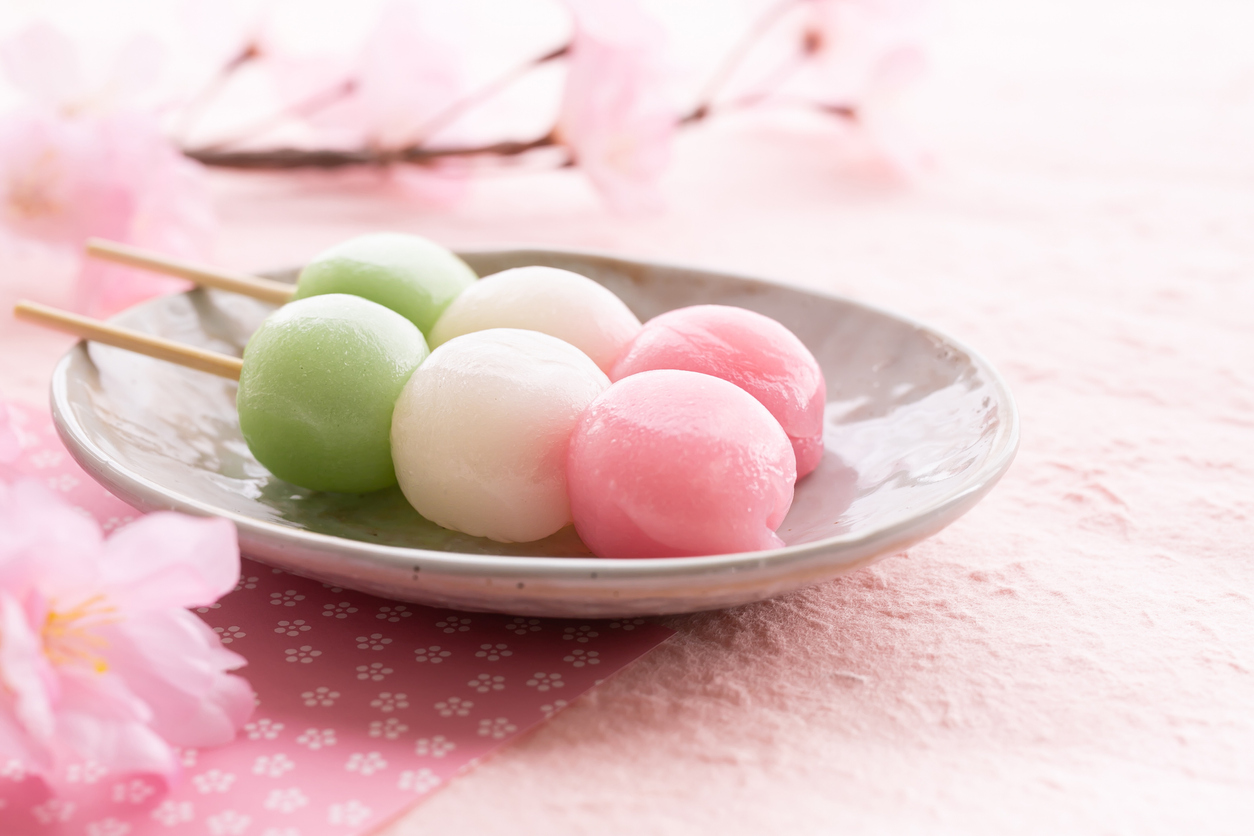Japanese confectionery brings out the best of the seasons by foregrounding motifs and flavors representing the changing weather. Indeed, once I started living in Japan and experiencing the ebbs and flows of the seasons here myself, the diversity of wagashi increasingly fascinated me, and soon, these Japanese desserts began making their way onto my table and into our family traditions.
When you imagine spring in Japan, cherry blossom trees probably come to mind, alongside fresh buds and bird songs. Wagashi makers capture this in their fresh creations, many of which tie in the ephemeral and iconic sakura, as well as Japanese festivities of the season, such as Hina Matsuri (Girls’ Day) and Kodomo no Hi (Children’s Day). Get to know five of the most delicious spring sweets below.
1. Hanami dango

Heralding the arrival of spring all over Japan is the simple yet delectable hanami dango, which are sweetened glutinous rice dumplings served on skewers. The act of eating these dango became popularized after Toyotomi Hideyoshi served them to his guests at a hanami event at Daigoji Temple in Kyoto in 1598.
This iconic confectionery always comes with three dumplings, one pink, one white and one green, on a skewer, hence why they are also referred to as sanshoku (three color) dango. Some say that these colors were chosen because they represent the life cycle of sakura: starting as pink buds, turning to white flowers and finally, becoming green leaves. The colors are also thought to refer to the seasons: pink for spring blooms, white for snowy winter and green for summery leaves.
2. Sakura mochi

Sakura mochi is a light pink glutinous rice ball that has a deliciously chewy texture and is filled with sweet red bean paste. Sakura mochi get their namesake from the salt-pickled sakura leaves that are wrapped around the mochi. This sweet yet salty combination intensifies the aromatic flavors and fragrance of sakura, making it a favorite wagashi of the spring season. There are regional differences in the ingredients and appearance of sakura mochi. In eastern Japan, the sakura mochi is made from shiratamako (a type of glutinous rice flour), which produces a smooth consistency, while in western Japan, a different glutinous domyojiko rice flour is used, which creates a granulated texture.
Click here to read more.
- External Link
- https://savvytokyo.com/





4 Comments
Login to comment
beachcomber
I love Japanese sweets because they’re healthy and delicious.
falseflagsteve
I don’t like Japanese sweets at all, neither does my dear partner, however she adores parfaits and crepes.
SapperJon
Japanese sweets are an acquired taste for the western palate, although I do like the reduced sweet taste given many of the sweet products in Japan
Elvis is here
Nothing beats a fresh manju and a cup of bitter tea. @FFS, You won't get good Japanese sweets in your local Wagamama. Best eat them in Japan.